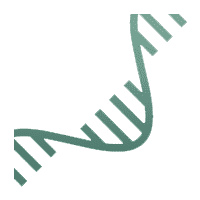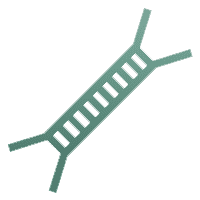Degradome Profiling (Degradome Sequencing)
Overview
Features
Workflow & Data Analysis
Requirements
Demo
Case Study
FAQ
Resources
Inquiry
Degradome sequencing is a next-generation sequencing (NGS)-based method to comprehensively detect microRNA, a class of endogenous non-coding small RNA with of about 22 nt in length. These small fragments accumulate stably in cells, some of which may participate in the regulation of alternative splicing or protein translation. We provide one-stop Degradome sequencing services to help you research microRNA in depth.
Overview
MicroRNA (miRNA) is a type of endogenous non-coding small RNA with a length of about 22 nt, which is widely present in animals, plants, viruses, and other organisms. Studies have shown that miRNAs are involved in various biological processes of cell proliferation, apoptosis, differentiation, metabolism, tumor, growth and development, and stress response in animals and plants. miRNA achieves its important biological functions through the expression of target genes (mRNA) regulated at the post-transcriptional level. Therefore, identifying mRNA regulated by miRNA is the key to explaining the complex regulatory mechanisms of miRNAs. We provide comprehensive degradome sequencing to help customers in-depth study of the role of non-coding RNAs. The technology is mainly aimed at sequencing miRNA-mediated shearing and degrading fragments, screening target genes of miRNA from experiments, and combining the advantages of bioinformatics analysis to determine the precise pairing information between degraded fragments and miRNA. Meantime, it can accurately and efficiently screen out miRNA target genes from cells or tissues, and provide accurate and efficient screening methods for studying the relationship between miRNAs and their corresponding target genes. Degradome Sequencing promotes the functional research of miRNAs, can precisely and efficiently screen miRNA target genes from cells or tissues, and provide accurate and efficient screening methods for studying the relationship between miRNAs and their corresponding target genes.
Integrative Transcriptome-Small RNA- Degradome sequencing Solution
Our solution employs a multiomics approach, integrating transcriptome, small RNA sequencing, and degradome profiling to unravel intricate gene regulatory networks. The miRNA sequences utilized for degradome analysis are derived from small RNA sequencing, while the comparative database comprises sequences spliced by transcriptome sequencing. This method unveils the intricate relationships between miRNAs and target genes, providing a clear miRNA-target gene network regulation map.
This map succinctly illustrates how miRNAs regulate multiple target genes, and conversely, how the same target gene can be regulated by multiple miRNAs. The synthesis and analysis of these three datasets uncover the nuanced regulatory mechanisms underlying the gene expression process, offering valuable insights into the intricate network of genetic regulation.
Features
| High Throughput |
High Accuracy |
High Repeatability |
One-stop Service |
| Obtain more than 10 million sequence information in one sequencing. |
Accurate counts of copies from a few to hundreds of thousands. |
Deep sequencing ensures the randomness of detection and does not require technical repetition. |
Provides one-stop service for library construction, sequencing, sample QC and data analysis. |
Project Workflow

1. Sample Preparation
RNA purification;
quality assessment and quantification.

2. Library Preparation
Size selection;
strand-specific cDNA libraries.

3. Sequencing
Illumina HiSeq;
PE 50/75/100/150.

4. Data Analysis
Visualize and preprocess results, and perform custom bioinformatics analysis.
Bioinformatics Analysis Pipeline
In-depth data analysis:
- Reference-based mapping
- Sequence depth statistics of mRNA
- Predict target genes of known miRNAs
- Degradation site analysis
- Classification annotation of non-coding RNA
- Identification of known and novel non-coding RNAs
- GO and KEGG pathway analysis
-
Clustering analysis and enrichment analysis
Sample Requirements
RNA sample quantity ≥ 20 ug.
1.8 ≤ OD260/280 ≤ 2.2, OD260/230 ≥ 1.0, 28S:18S ≥ 1.5, RIN ≥ 7.0.
Please make sure that the RNA is not significantly degraded.
Sample storage: RNA can be dissolved in ethanol or RNA-free ultra-pure water and stored at -80°C. RNA should avoid repeated freezing and thawing.
Shipping Method: When shipping RNA samples, the RNA sample is stored in a 1.5 mL Eppendorf tube, sealed with sealing film. Shipments are generally recommended to contain 5-10 pounds of dry ice per 24 hours.
Deliverable: FastQ, BAM, coverage summary, QC report, custom bioinformatics analysis.
Demo Results
 Differential miRNA clustering heatmap
Differential miRNA clustering heatmap
 miRNAs and target genes interactions
miRNAs and target genes interactions
 GO enrichment
GO enrichment
Case Studies
-
-
Identification of miRNA Target Genes
-
The most important application of degradome profiling is the detection of miRNA target genes. When we detect which genes are sheared by miRNAs through this technology, we can then know the downstream affected genes, which in combination with GO and KEGG annotation information helps us to further understand the regulation of miRNAs. Taking Arabidopsis thaliana as the research target, data analysis using degradome sequencing revealed that 94 and 98 of the 100 confirmed Arabidopsis miRNA target genes were detected in the two degradome libraries, respectively. Among the 124 target genes predicted by biosignatures, 31 and 42 target genes were found to be consistent with them in the two degradome libraries, respectively. Subsequently, 13 previously unidentified and unpredicted miRNA target genes were screened out from the t-plots in the degradome sequencing data and validated by 5'RACE, and 12 target genes were confirmed. A new target gene of miR398, CCS1, was identified by this technique, and the existence of this target gene was also verified in subsequent RACE experiments.
-
-
Discovery of Novel miRNAs
-
In contemporary research, the rapid and precise identification of new miRNAs has become feasible through various methodologies, including miRNA sequencing. Leveraging degradome sequencing, we can not only identify but also confirm novel miRNAs by elucidating the cleavage targets of miRNAs. This process allows for the acquisition of both miRNAs and their corresponding target genes.
The specific methodology employed in this study involved several key steps. Initially, known miRNAs cataloged in miRBase and their associated target genes were systematically excluded from the degradome library. Subsequently, sequences with values below 10 TP10M were filtered out. A meticulous screening process, considering the secondary structure of candidate miRNAs and their abundance, was conducted. Validation was then carried out using DCL mutants.
Through this rigorous process, three novel miRNAs—ATH-miR1886, ATH-miR1887, and ATH-miR1888—were successfully identified and validated using degradome sequencing. Notably, this innovative approach focuses on the perspective of target genes, surpassing traditional prediction methods. It not only yields the miRNA sequences but also provides invaluable experimental data on their corresponding target genes.
The outcomes of this study are comprehensively summarized in the ensuing table, highlighting the successful identification of novel miRNAs and their associated experimental data through the groundbreaking application of degradome sequencing technology.
-
-
Detection of miRNA-Target Gene Relationship
-
Diverse isoforms within the miR444 family can cleave overlapping sites on shared target genes. While RACE validates target genes, it lacks quantitative insights. Enter degradome sequencing, offering precise quantification. Examining miR444 isoforms, we find distinct cleavage sites on MADS-box genes, revealing preferential cleavage sites and prioritizing cleavage hierarchy. Degradome sequencing provides a concise yet comprehensive view of miRNA-target interactions and cleavage priorities.
FAQ
-
-
Is transcriptome data required for degradome sequencing?
-
Transcriptome sequencing is recommended when doing degradome sequencing. Since the identification of degradome results depends on comparison with known sequence information, species with well-developed transcriptome information are more suitable for degradome sequencing in order to uncover more comprehensive degradation information.
-
-
Which species are suitable for degradome sequencing?
-
In contrast to animals, plant miRNAs typically exhibit extensive pairing with target genes, leading to target gene splicing and precise regulation of gene expression. This characteristic results in fewer false positives and enhances the accuracy of identification outcomes. Consequently, plants are more conducive to studying miRNA target genes through degradome sequencing when compared to animals. Furthermore, model organisms or species with comprehensive transcriptome information are particularly well-suited for degradome sequencing in the investigation of miRNA target genes, especially in comparison to species with incomplete transcriptome data.
-
-
What sequencing platforms and read lengths are employed in degradome sequencing?
-
In the realm of degradome sequencing, the NGS platform, Illumina, adopts the SE50 sequencing strategy to accommodate the short length of target fragments.
References:
- Yongping Zhao, Zhenhua Xu, Qiaocheng Mo, et al. Combined small RNA and degradome sequencing reveals novel miRNAs and their targets in response to low nitrate availability in maize. Ann Bot, 2013, 8, 112(3): 633-642.
- Xiyan Yang, Lichen Wang, Daojun Yuan, et al. Small RNA and degradome sequencing reveal complex miRNA regulation during cotton somatic embryogenesis. J Exp Bot, 2013, 4, 64(6): 1521-1536.
- Dongliang Yu, Min Xu, Hidetaka Ito, et al. Tracking microRNA Processing Signals by Degradome Sequencing Data Analysis. Front Genet, 2018, 9: 546.
* For Research Use Only. Not for use in diagnostic procedures.





 Differential miRNA clustering heatmap
Differential miRNA clustering heatmap  miRNAs and target genes interactions
miRNAs and target genes interactions  GO enrichment
GO enrichment